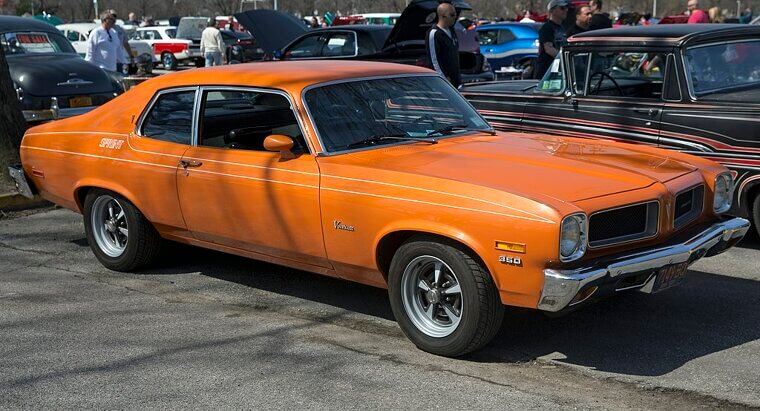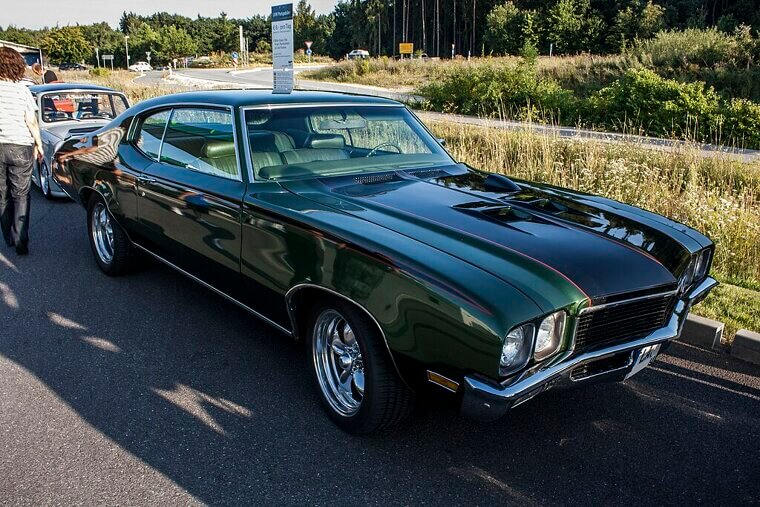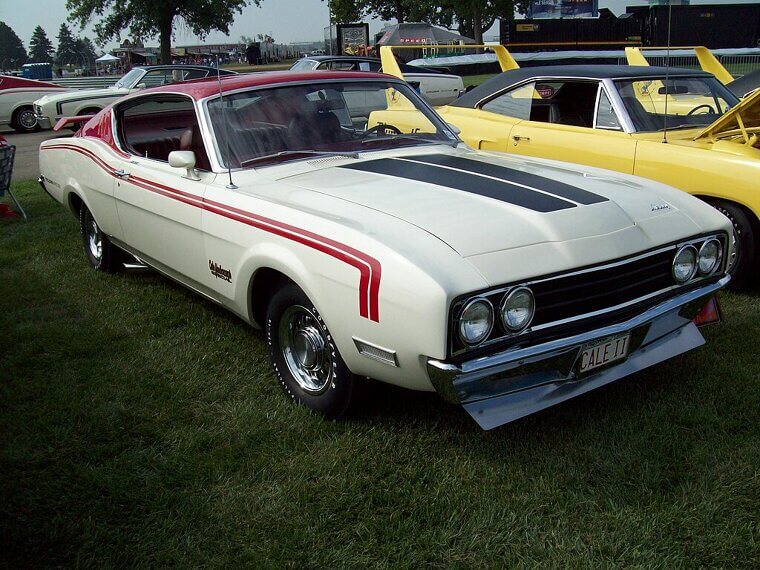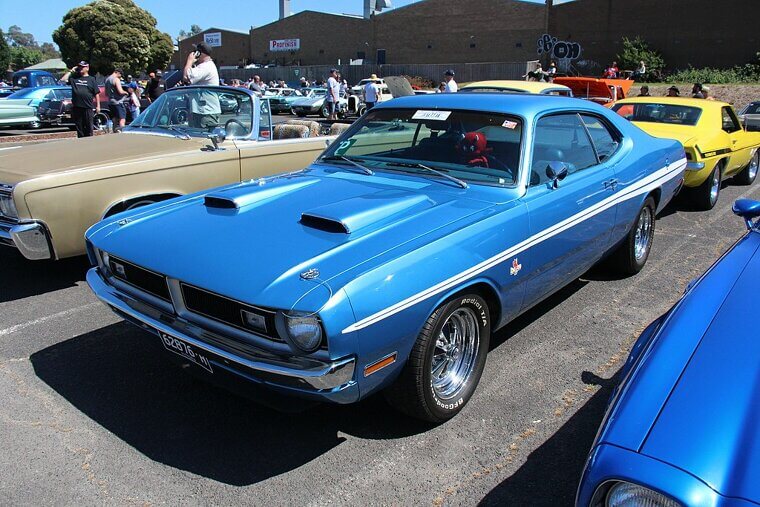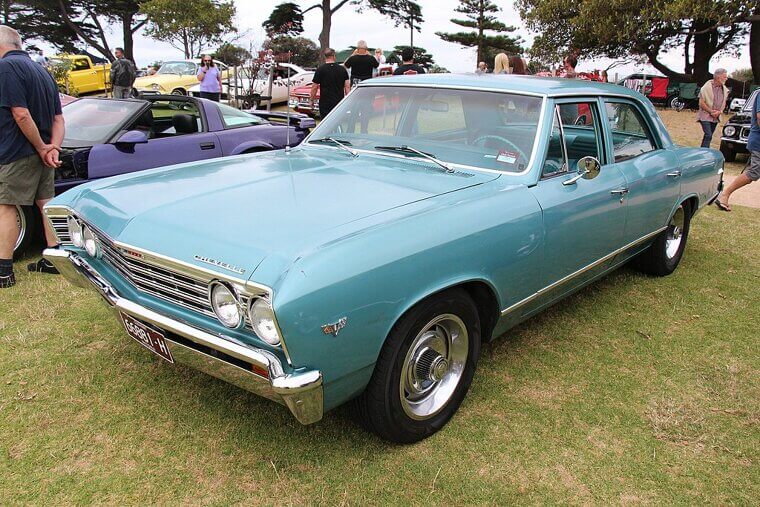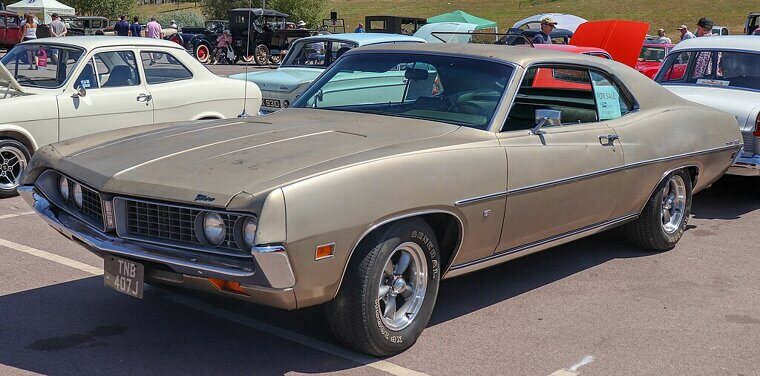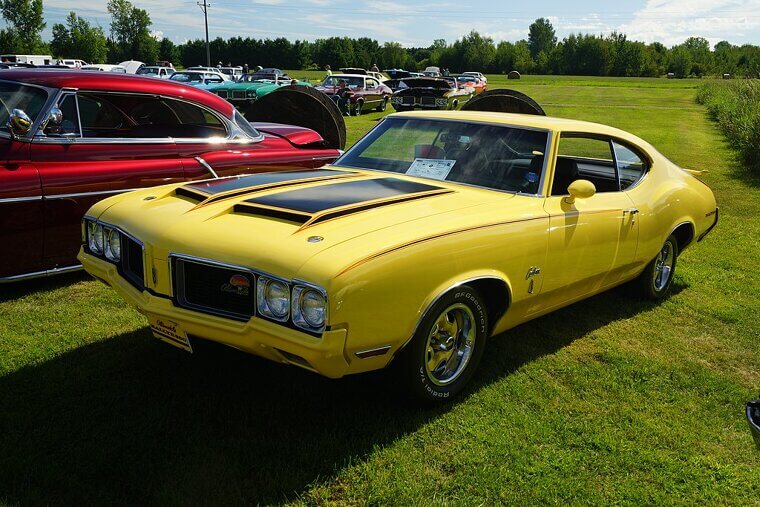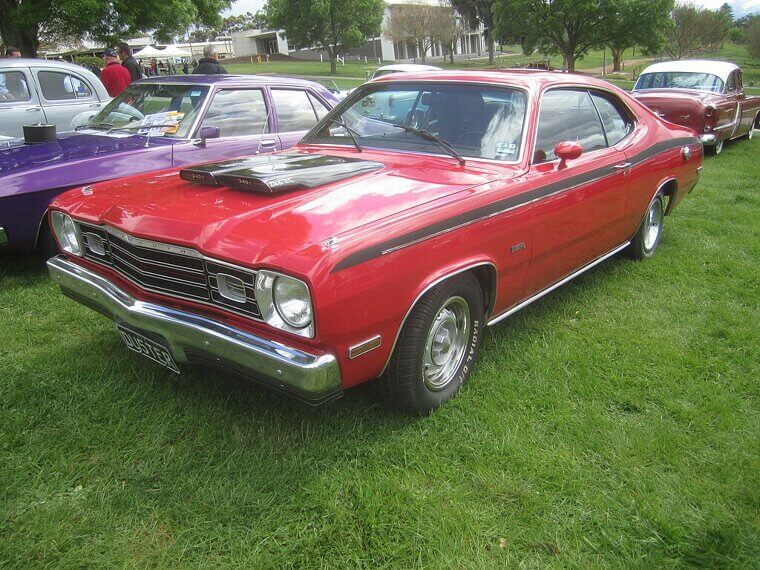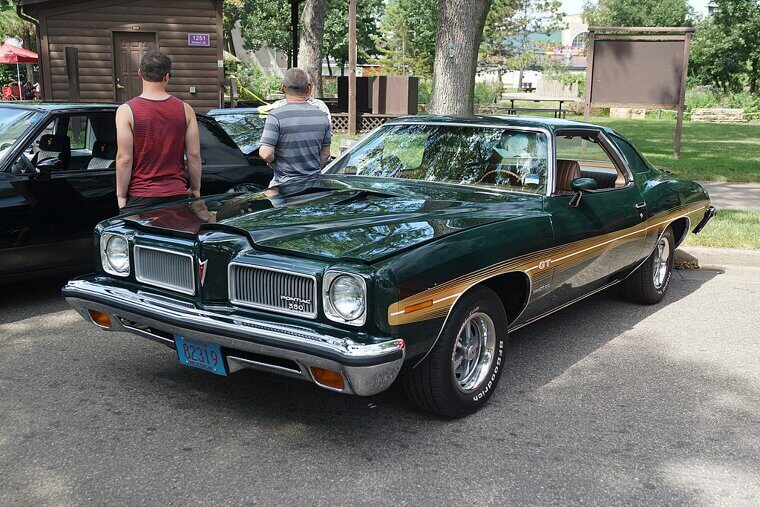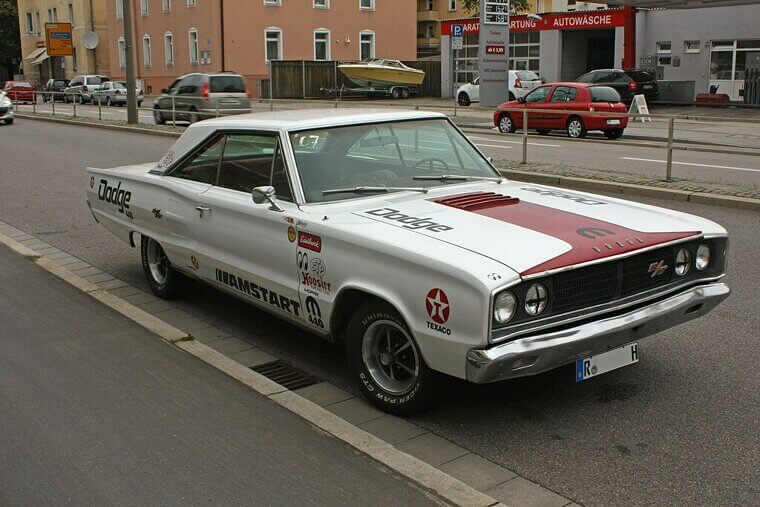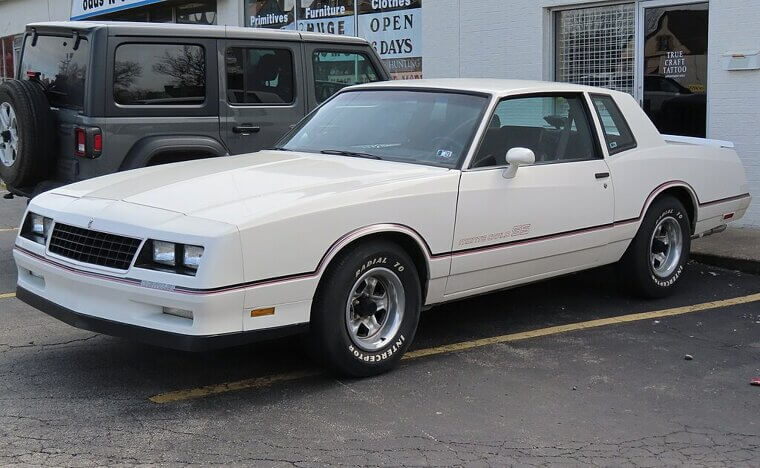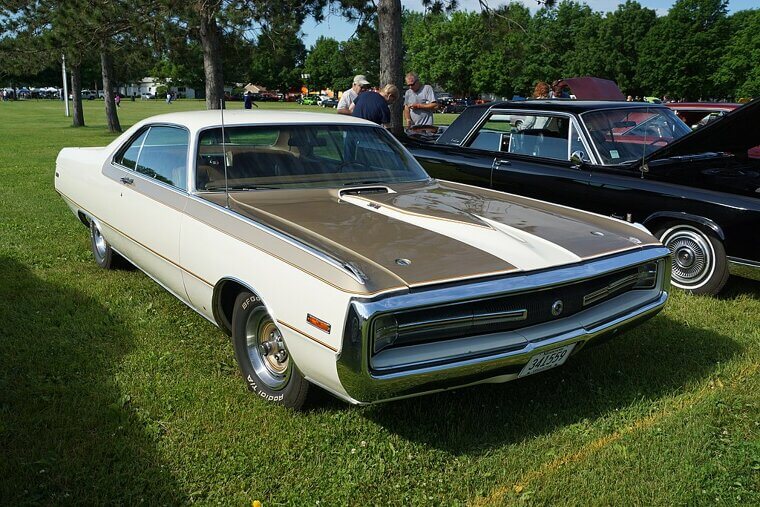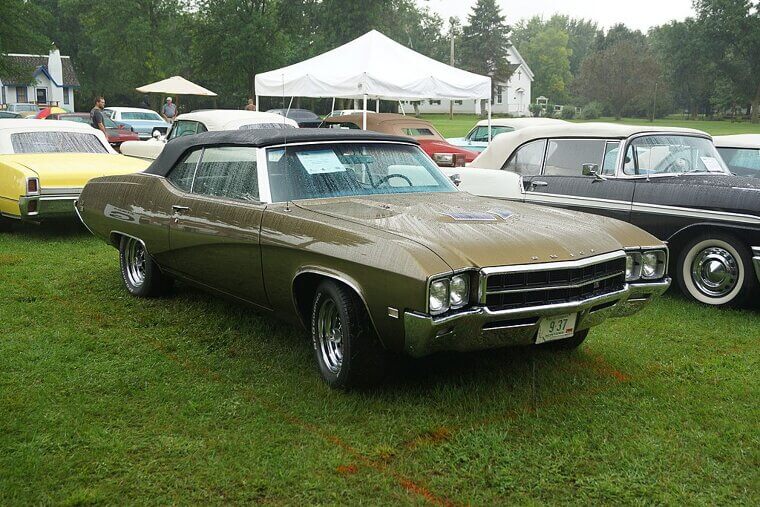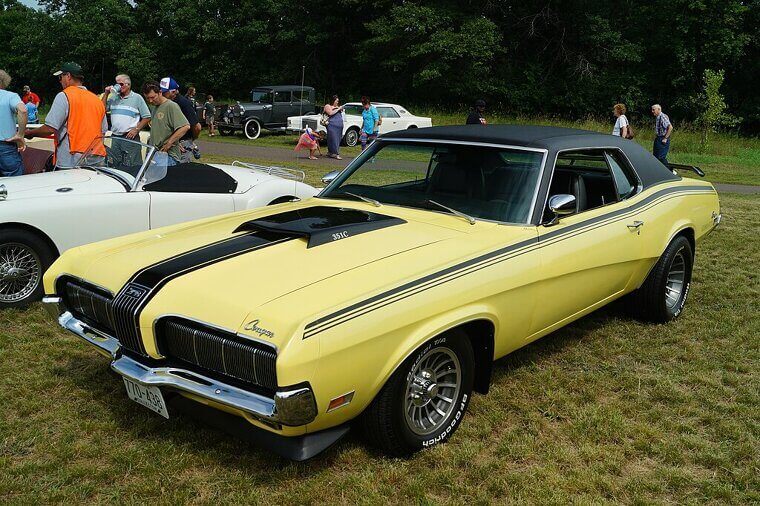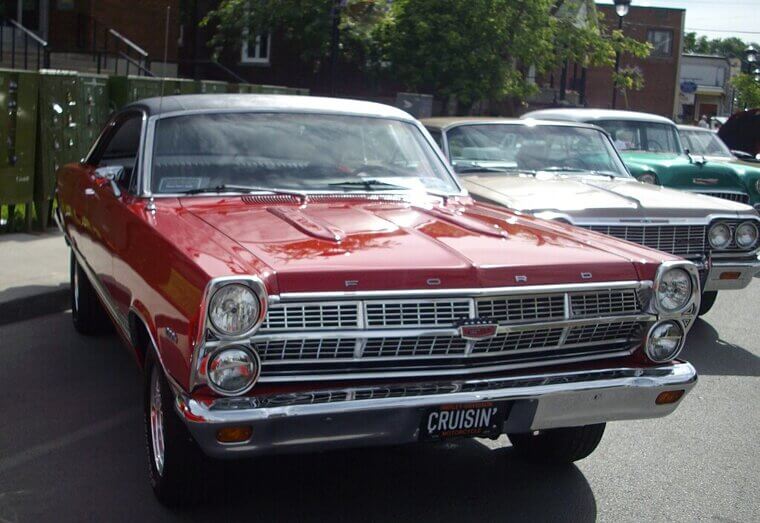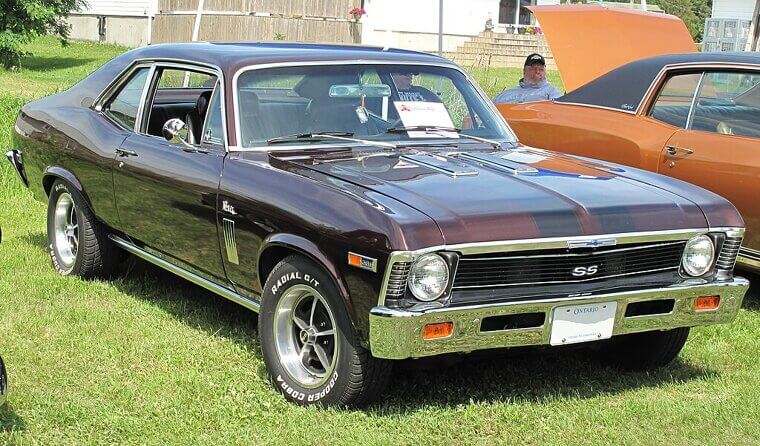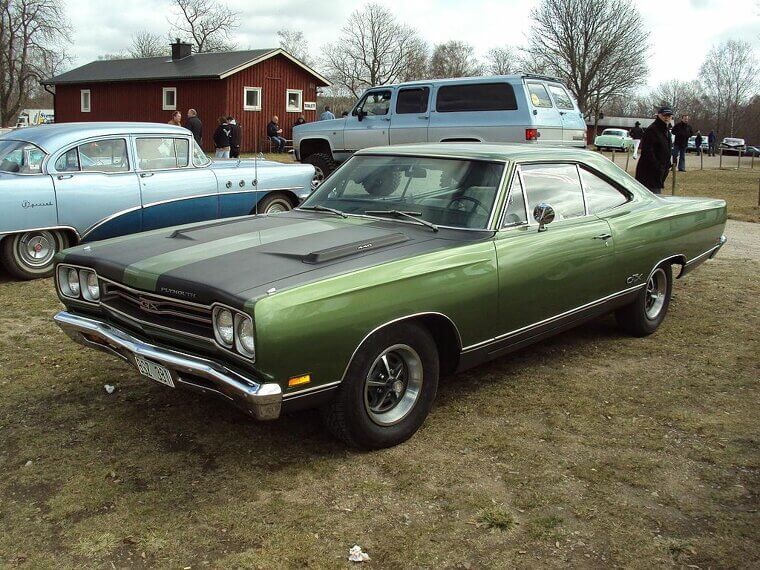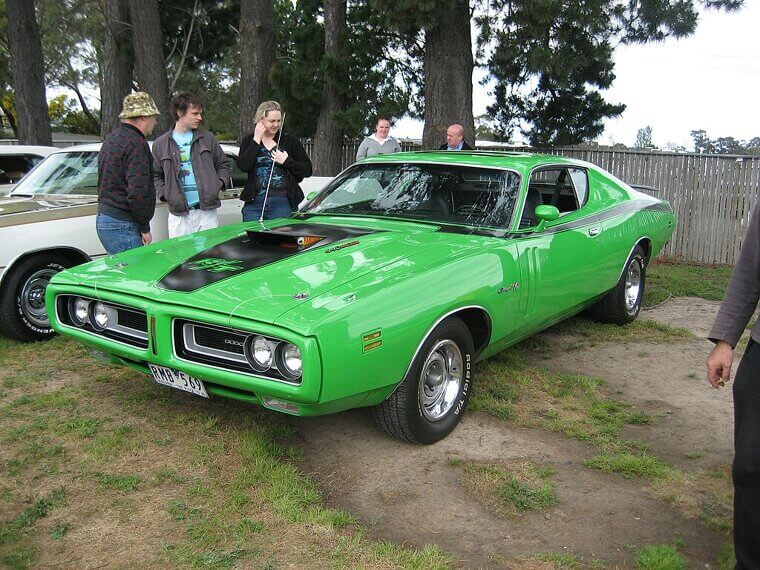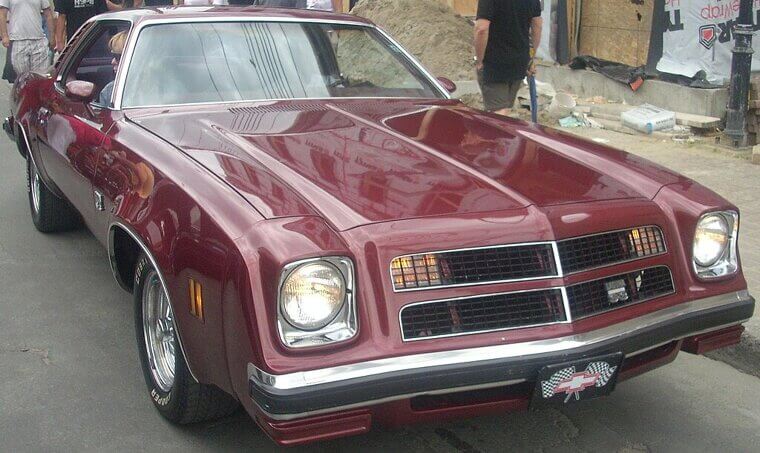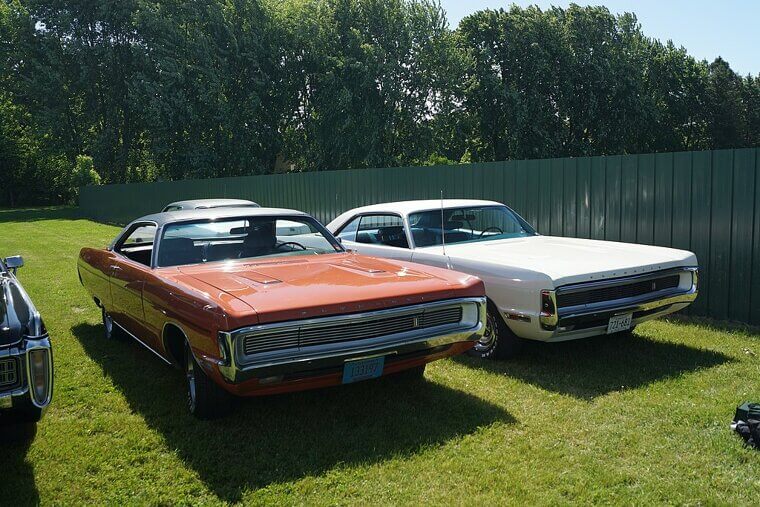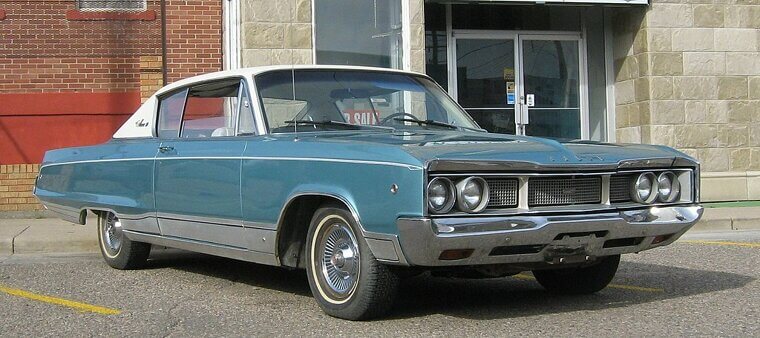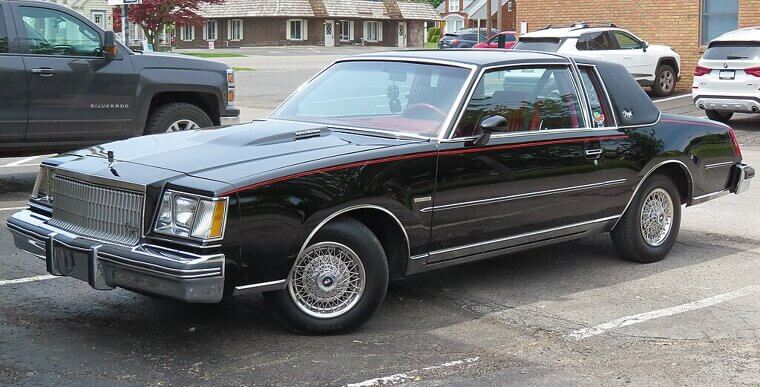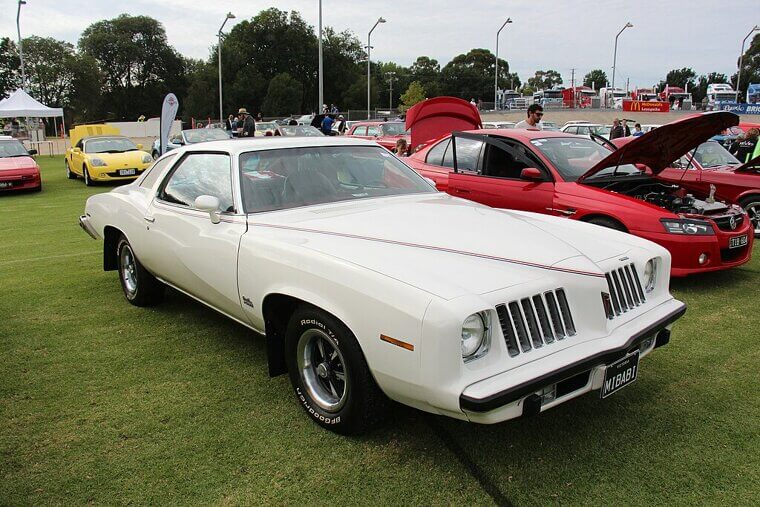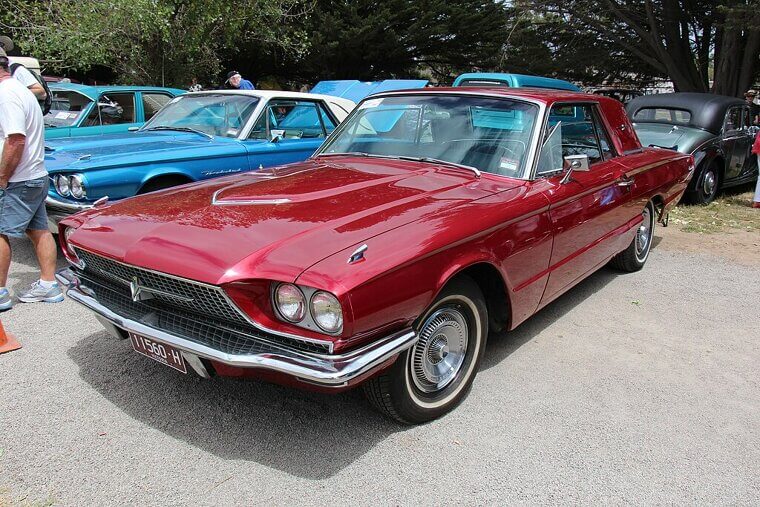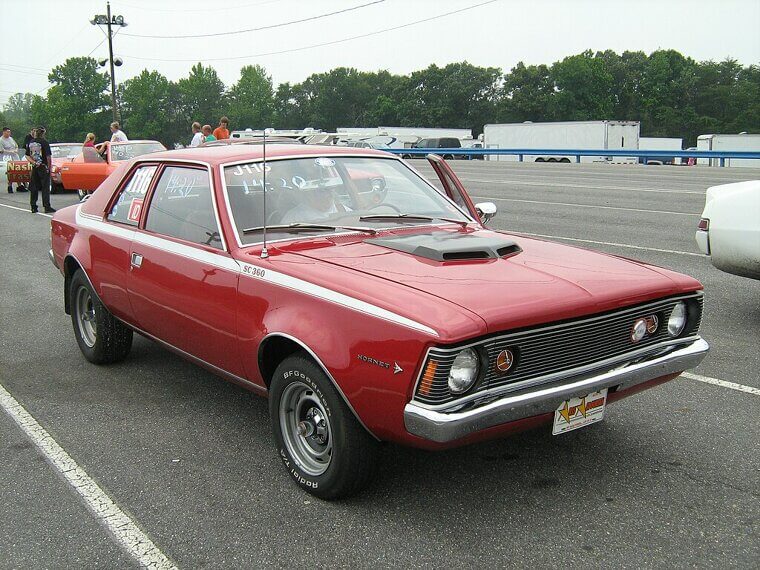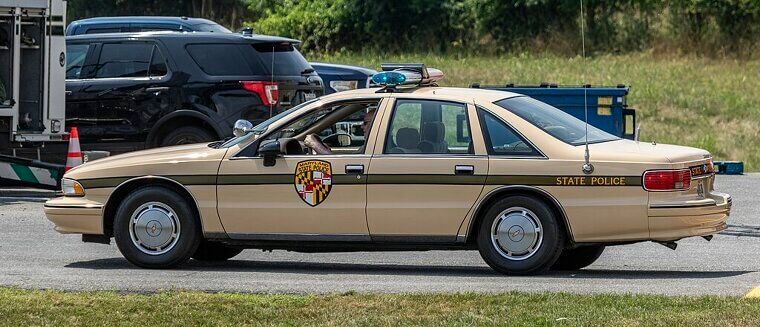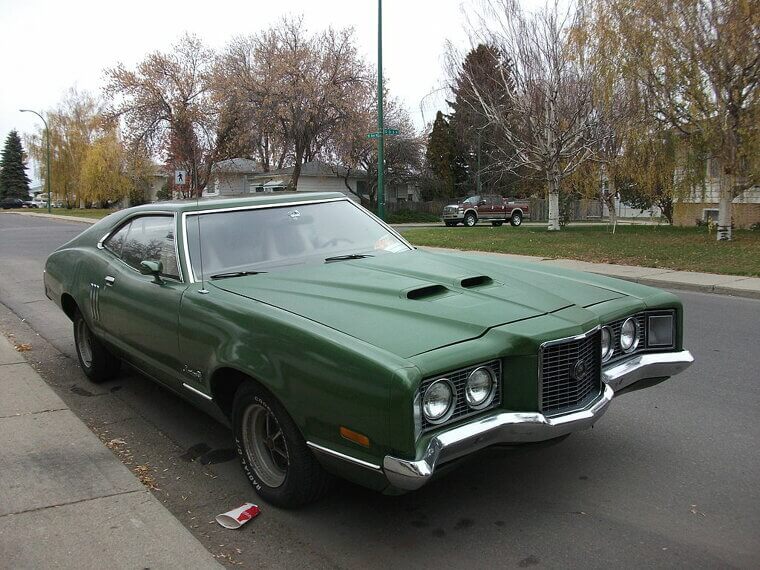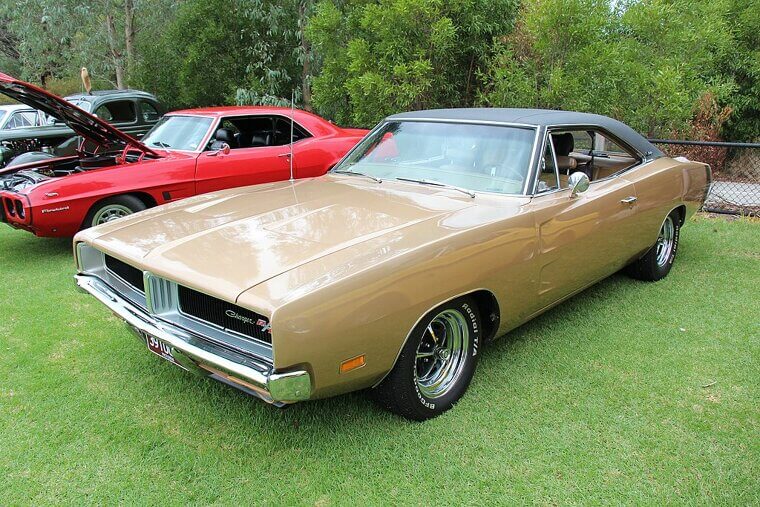Pontiac Ventura Sprint (1971–1977)
The Ventura Sprint had a mild name and nature - at least in its early years - so its street cred tanked. Later models had optional Pontiac 350 or 400 CID V8s, but by that point it was too late; drivers already had their sights set on its share-platform counterparts, the successful Nova models.
AMC AMX (1968–1970)
In 1969 the AMX won ten national speed records in its class! However, AMC was a scrappy underdog with a budget reputation and its two-seater configuration put the AMX in direct competition with the wolves of its generation. Sadly, it was overshadowed.
Buick GSX (1970–1972)
Buick was known for making comfortable grandpa vehicles, so people passed the GSX up for badges with more clout. Ironically, the GSX broke records at the time with its Stage 1 455 V8 that got 510 lb-ft of torque.
Mercury Cyclone Spoiler II (1969)
The Cyclone Spoiler II was built for NASCAR homologation, so although it was an aerodynamic track dominator, it didn’t look as flashy as some muscle cars. It didn’t help that just over 500 were ever made, so it was super-rare.
Dodge Demon 340 (1971–1972)
Capable of doing 0–60 in under 6 seconds, the Demon lived up to its name, but its moniker was also a problem! The title “Demon” caused religious backlash (especially in certain regions); between that and the compact genre being underlooked, it undersold.
Chevrolet Chevelle 300 Deluxe 396 (1966–1969)
The 300 Deluxe didn’t have super flashy badges because it was a base trim. Without any frills it was largely dismissed - despite having some real firepower under the hood! Those who were in the know bought it purely for drag racing, and many got stripped down.
Ford Torino GT (1968–1971)
Although it ran in NASCAR and had a selection of big-block engines waiting to break the speed limit, the Torino GT fell prey to Ford’s indecisive marketing - it couldn’t decide whether to push the Torino as a luxury or performance car.
Oldsmobile Rallye 350 (1970)
The Rallye 350’s V8 generated 310 horsepower (hp) so why did it bottom out? The lemon yellow (and matching bumper) confused people, while the 442 stole the rest of its thunder. There were also few made - only 3,500 and of those, many were raced into the ground.
Plymouth Duster 340 (1970–1973)
Because it was super cheap and looked unassuming, drivers dismissed the Duster as an economy car. That’s a shame, because its 340 small-block could make 275 hp - that’s enough to eat cars several times its size and spit out the chassis.
Pontiac LeMans Sport GT (1970–1971)
Despite being lighter, cheaper and looking almost identical to its GTO cousin, buyers weren’t interested in the GT. They’d much rather buy the GTO for the prestige, though to be fair Pontiac didn’t invest deeply into the GT’s marketing. Few exist in mint condition today!
Dodge Coronet R/T (1967–1970)
The Coronet R/T competed with the Charger, which took all the attention - despite the Coronet being cheaper, lighter, and as a result, sometimes faster. With a standard 440 Magnum V8 or an optional 426 HEMI it was designed to outrace Mustangs, but it lacked flash (and thus, popularity).
Mercury Marauder X-100 (1969–1970)
Mercury marketed the Marauder X-100 as a luxury coupe, so even though it lacked street cred, it had muscle in spades. Its standard 429 CID V8 did 360 hp and had torque for days, but it was too classy for the muscle crowd to appreciate.
Chevrolet Monte Carlo SS 454 (1970–1971)
Since it was another vehicle misleadingly marketed as a luxury coupe, the Monte Carlo was a sleeper muscle car that could officially erupt in 360 hp, and that was understated! It was a complete beast, but drivers stared at the Chevelle SS 454 instead like the distracted boyfriend meme.
Chrysler 300 Hurst (1970)
When the limited edition 300 Hurst rolled up with a massive price tag and available units maxed out at 500, buyers were confused: was it a gimmick or a hotrod? It was actually a unique Hurst/Chrysler collaboration with the GTX’s muscle, but it was too strange to survive.
Studebaker Avanti R3 (1964)
Hand-built and supercharged to make over 335 hp the Avanti R3 looked like a spaceship and could compete with any of the titans of its time. The downside? Only nine were ever built (yes, nine!) so few people knew it existed, let alone seen one.
Buick Gran Sport 400 (1965–1969)
When it came to muscle cars branding was everything, and unfortunately the Gran Sport 400 lacked an aggressive marketing campaign. It didn’t howl like other muscles, but it still made 325–340 hp with its torque-y 401 “Nailhead” V8, and was comfortable to boot.
AMC Rebel Machine (1970)
Unlike some overlooked cars of its day, the Rebel Machine was actually shouted too loud for attention; buyers walked by quickly trying not to make eye contact. With its 340 hp 390 CID V8 engine it had a lot to shout about though, and it left Road Runners eating dust.
Mercury Cougar Eliminator (1969–1970)
The Cougar was like a Mustang dressed for the opera, so buyers didn’t believe it had any fight in it; the fact that it didn’t have the same marketing chops only made matters worse. They didn’t realize it was exploding with power - just refined and directed.
Ford Fairlane GT (1966–1969)
Because Ford didn’t market it as a performance car, the Fairlane was always in the shadow of other models; first the Mustang, then the Torino. Nevertheless, it had some potent engine options (including a 428 Cobra Jet V8), and its GT package was particularly fire.
Chevrolet Nova SS 396 (1968–1970)
Unlike some of the Nova family, the SS 396 was considered something of a casual car, but it was actually an affordable little rocket with a 396 big-block engine as standard. It could smoke cars much bigger than it, but because it was small and unassuming, it was severely underrated.
Plymouth GTX (1967–1971)
The GTX brought refined intimidation to the table - it came with a 440 V8 as standard or an optional 426 HEMI - and packed enough specs to make other muscle cars blush. But style didn’t sell as much as flash, so the GTX was ignored in favor of louder models.
Dodge Charger SE 383 (1971–1974)
While the 1968–70 Chargers were famous thanks to their role in “The Dukes of Hazzard” and “Fast & the Furious,” the ’71+ was mistakenly seen as luxury rather than performance. Its torque-rich 383 Magnum V8 standard engine, fastback roof and coke-bottle shape should have made it a winner.
Pontiac Can Am (1977)
Pontiac created a true NASCAR-capable monster with a 400 CID V8 (or 403 for California cars) that looked like it preyed on other muscle cars. However, execs feared it would steal sales from the Grand Prix, and they pulled the plug on it after a year.
Oldsmobile 442 W-30 (1966–1971)
While the 442 line was respected, few people knew the W-30 existed - and among those that did, most turned their nose up because it lacked pizzazz. It was a sleeper muscle car though, and when it was tuned properly it could compete with HEMIs.
Chevrolet Laguna S-3 (1974–1976)
People didn’t love the Laguna’s styling, but the biggest killer to its popularity was the emissions crisis that hit in the mid ’70s. Yet despite those laws, the Laguna was a NASCAR dominator with its RWD, aerodynamic body, sport suspension and rally wheels.
Ford Maverick Grabber (1970–1975)
The Maverick Grabber was light on its wheels and its optional 302 V8 gave it a potent turn of speed, especially when modded. So where did it go wrong? Well, Ford released it to compete with imports, and it was wrongly seen as a budget economy car.
Plymouth Sport Fury GT (1970–1971)
The Fury GT’s production only ran for a year and it was full-sized muscle, meaning buyers overlooked it. However, with its 440 Super Commando Six Barrel engine capable of 390 hp, it could flex harder than most!
Dodge Monaco 500 (1969–1971)
The Monaco 500’s 440 Magnum V8 provided police pursuit speed in a civvie vehicle. It was the complete package - comfortable, performant and nimble for its size. However, its appearance in “Blues Brothers” got it saddled with a police car rep, so it didn’t appeal to the muscle crowd.
Buick Regal Sport Coupe Turbo (1978–1983)
In the late ’70s strict emissions laws made muscle cars flabby and slow, and the same was assumed of the Regal Sport. It was actually really fast though - it had a 3.8L V6 turbo engine, which was pioneering in its day. People didn’t understand turbocharging in those days, though!
Pontiac Grand Am 455 (1973–1975)
People saw the Grand Am and thought “personal luxury car,” especially in a time when muscle car performance was choked by regulations. However, its sophisticated exterior hid a real beast with an optional torque-loaded 455 V8 - it didn’t help sales, but it should.
Ford Thunderbird 428 SCJ (1969)
Over the years, the Thunderbird had become associated with luxury cruisers, so when one rocked up to the muscle car party, no one knew it had game. It did. The optional 428 Super Cobra Jet (which many didn’t know was an option) turned the Thunderbird into a road predator.
AMC Hornet SC/360 (1971)
When you combine AMC’s underdog status with the Hornet’s compact commuter car reputation, no one paid it any attention. It was a budget-friendly sleeper though, with a 360-cubic-inch V8 capable of 285 hp!
Chevrolet Caprice 9C1 (Police Package Muscle) (1994–1996)
The Caprice 9C1 had a Corvette’s roaring LT1 V8 under its hood and was built like a tank, but that didn’t matter to muscle fans. Highway patrol used this vehicle to hunt down street racers with shocking efficiency, and that made it their enemy.
Mercury Montego GT (1968–1971)
Since Mercury lacked Ford’s rep, the Montego GT suffered, despite its V8 engine options. It handled well and looked the part, but it couldn’t couldn’t outrace its own undesirable image.
Dodge Magnum GT (1978–1979)
One of the last gasps of the emission-strangled muscle car era, the Magnum GT was still holding the rebellious torch with its NASCAR associations and V8 engines, but by then few buyers were interested in the genre.

